Aymen Hamrouni
AoI in Context-Aware Hybrid Radio-Optical IoT Networks
Dec 17, 2024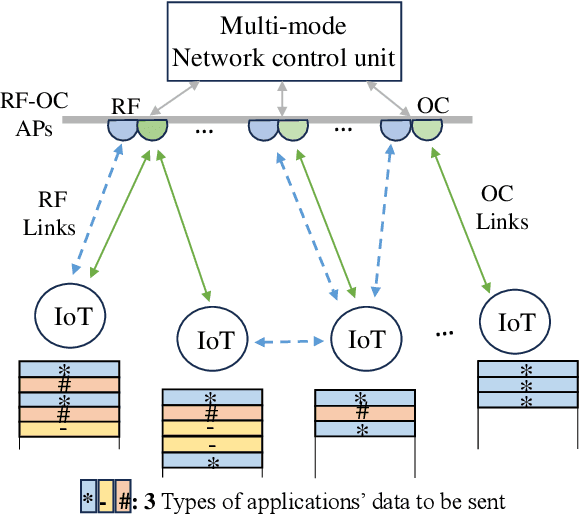
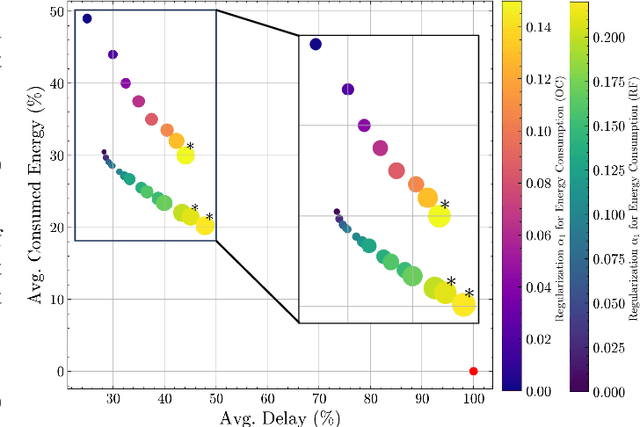
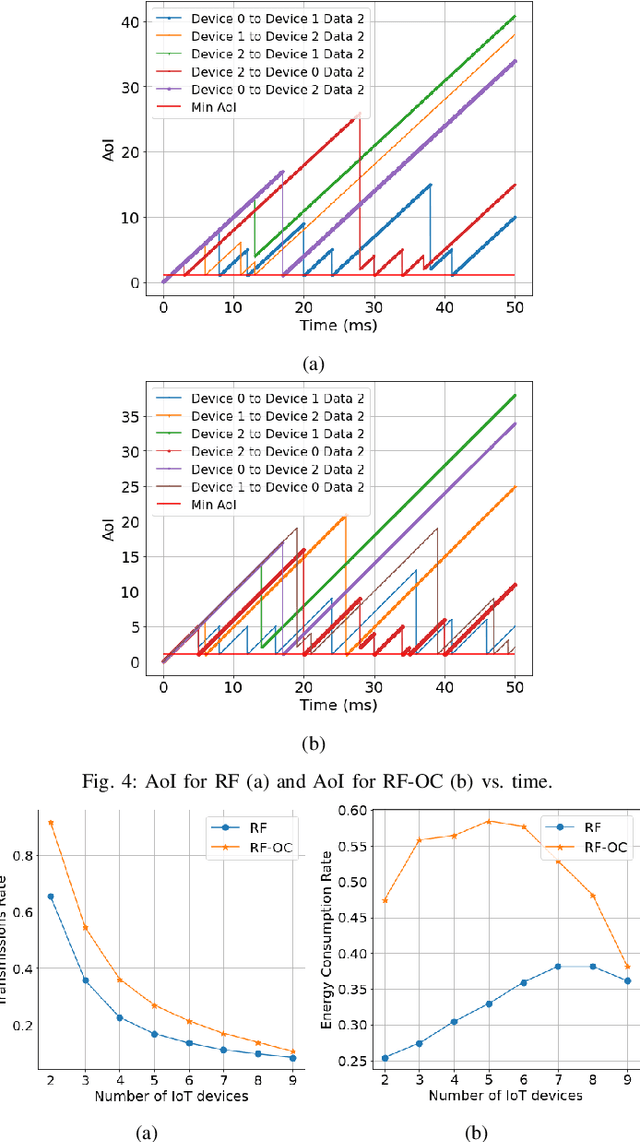
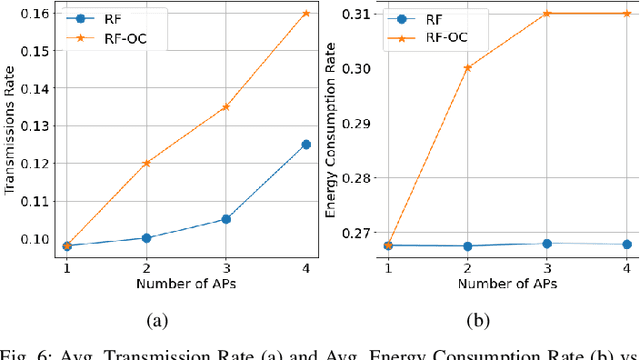
Abstract:With the surge in IoT devices ranging from wearables to smart homes, prompt transmission is crucial. The Age of Information (AoI) emerges as a critical metric in this context, representing the freshness of the information transmitted across the network. This paper studies hybrid IoT networks that employ Optical Communication (OC) as a reinforcement medium to Radio Frequency (RF). We formulate a quadratic convex optimization that adopts a Pareto optimization strategy to dynamically schedule the communication between devices and select their corresponding communication technology, aiming to balance the maximization of network throughput with the minimization of energy usage and the frequency of switching between technologies. To mitigate the impact of dominant sub-objectives and their scale disparity, the designed approach employs a regularization method that approximates adequate Pareto coefficients. Simulation results show that the OC supplementary integration alongside RF enhances the network's overall performances and significantly reduces the Mean AoI and Peak AoI, allowing the collection of the freshest possible data using the best available communication technology.
Service Discovery in Social Internet of Things using Graph Neural Networks
May 25, 2022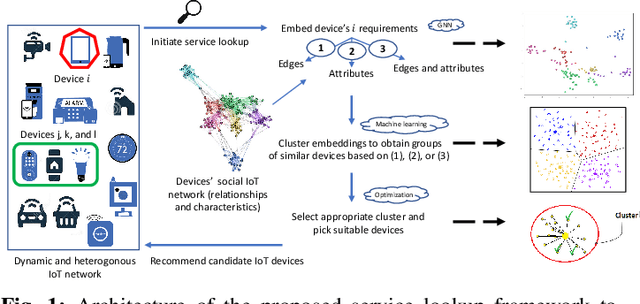
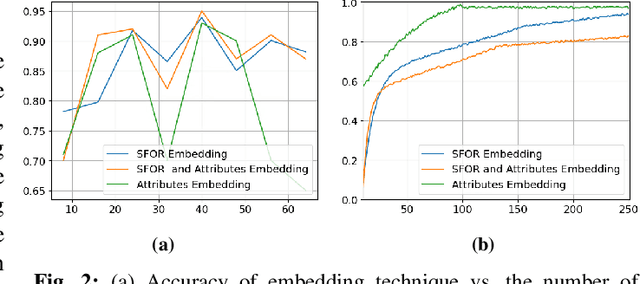
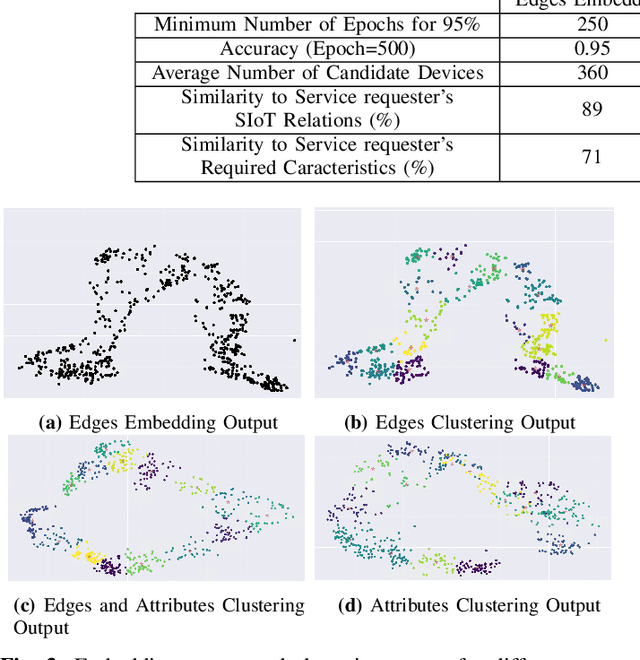

Abstract:Internet-of-Things (IoT) networks intelligently connect thousands of physical entities to provide various services for the community. It is witnessing an exponential expansion, which is complicating the process of discovering IoT devices existing in the network and requesting corresponding services from them. As the highly dynamic nature of the IoT environment hinders the use of traditional solutions of service discovery, we aim, in this paper, to address this issue by proposing a scalable resource allocation neural model adequate for heterogeneous large-scale IoT networks. We devise a Graph Neural Network (GNN) approach that utilizes the social relationships formed between the devices in the IoT network to reduce the search space of any entity lookup and acquire a service from another device in the network. This proposed resource allocation approach surpasses standardization issues and embeds the structure and characteristics of the social IoT graph, by the means of GNNs, for eventual clustering analysis process. Simulation results applied on a real-world dataset illustrate the performance of this solution and its significant efficiency to operate on large-scale IoT networks.
Low Complexity Recruitment for Collaborative Mobile Crowdsourcing Using Graph Neural Networks
Jun 01, 2021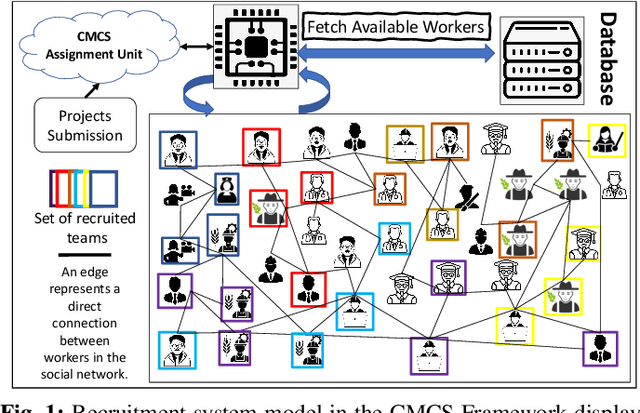
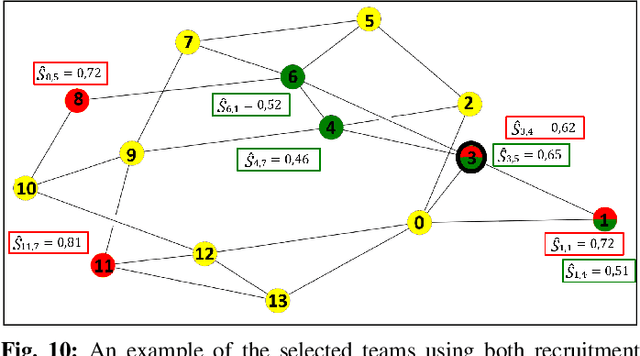
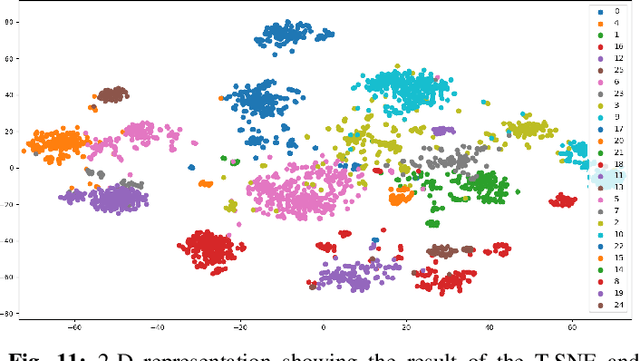
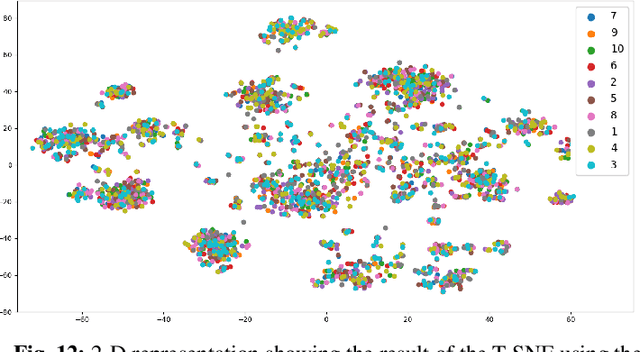
Abstract:Collaborative Mobile crowdsourcing (CMCS) allows entities, e.g., local authorities or individuals, to hire a team of workers from the crowd of connected people, to execute complex tasks. In this paper, we investigate two different CMCS recruitment strategies allowing task requesters to form teams of socially connected and skilled workers: i) a platform-based strategy where the platform exploits its own knowledge about the workers to form a team and ii) a leader-based strategy where the platform designates a group leader that recruits its own suitable team given its own knowledge about its Social Network (SN) neighbors. We first formulate the recruitment as an Integer Linear Program (ILP) that optimally forms teams according to four fuzzy-logic-based criteria: level of expertise, social relationship strength, recruitment cost, and recruiter's confidence level. To cope with NP-hardness, we design a novel low-complexity CMCS recruitment approach relying on Graph Neural Networks (GNNs), specifically graph embedding and clustering techniques, to shrink the workers' search space and afterwards, exploiting a meta-heuristic genetic algorithm to select appropriate workers. Simulation results applied on a real-world dataset illustrate the performance of both proposed CMCS recruitment approaches. It is shown that our proposed low-complexity GNN-based recruitment algorithm achieves close performances to those of the baseline ILP with significant computational time saving and ability to operate on large-scale mobile crowdsourcing platforms. It is also shown that compared to the leader-based strategy, the platform-based strategy recruits a more skilled team but with lower SN relationships and higher cost.
A Photo-Based Mobile Crowdsourcing Framework for Event Reporting
May 03, 2020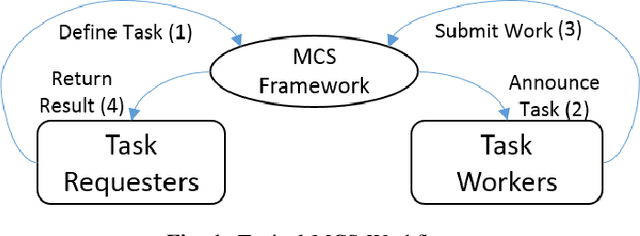
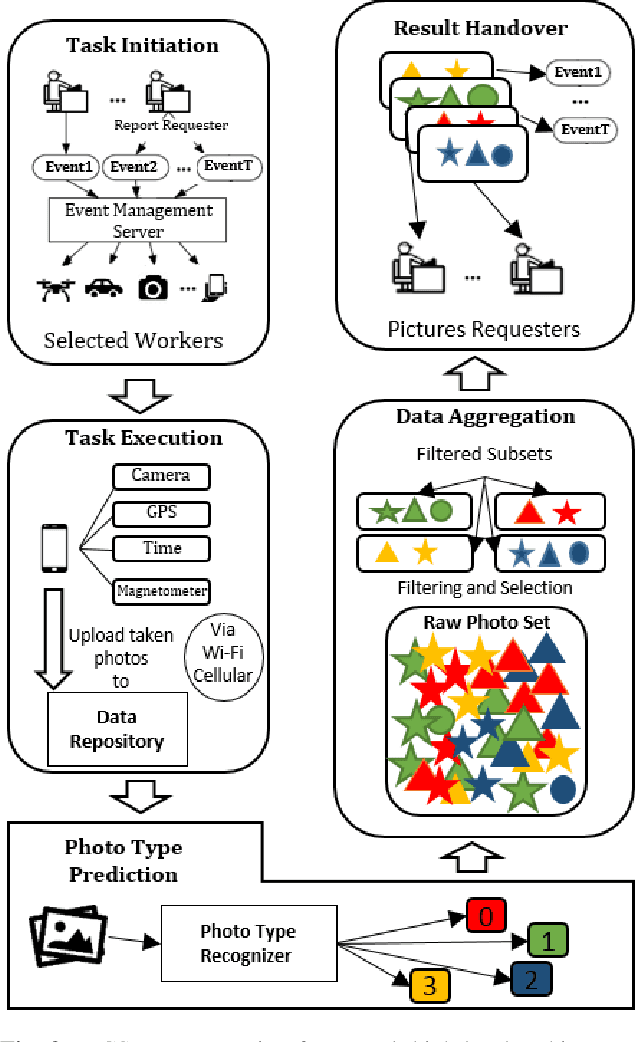
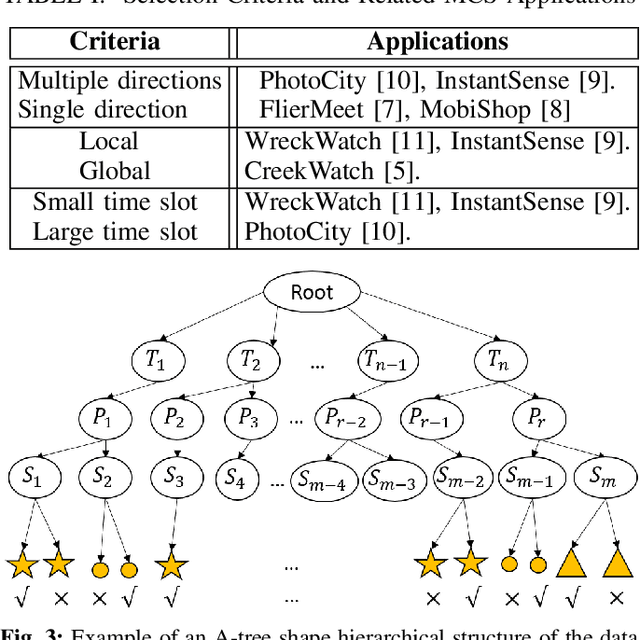
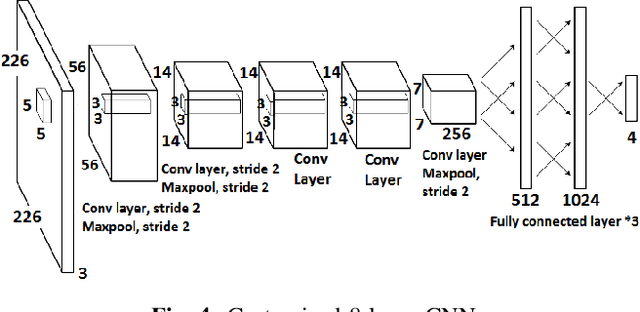
Abstract:Mobile Crowdsourcing (MCS) photo-based is an arising field of interest and a trending topic in the domain of ubiquitous computing. It has recently drawn substantial attention of the smart cities and urban computing communities. In fact, the built-in cameras of mobile devices are becoming the most common way for visual logging techniques in our daily lives. MCS photo-based frameworks collect photos in a distributed way in which a large number of contributors upload photos whenever and wherever it is suitable. This inevitably leads to evolving picture streams which possibly contain misleading and redundant information that affects the task result. In order to overcome these issues, we develop, in this paper, a solution for selecting highly relevant data from an evolving picture stream and ensuring correct submission. The proposed photo-based MCS framework for event reporting incorporates (i) a deep learning model to eliminate false submissions and ensure photos credibility and (ii) an A-Tree shape data structure model for clustering streaming pictures to reduce information redundancy and provide maximum event coverage. Simulation results indicate that the implemented framework can effectively reduce false submissions and select a subset with high utility coverage with low redundancy ratio from the streaming data.
* Published in 2019 IEEE 62nd International Midwest Symposium on Circuits and Systems (MWSCAS)
 Add to Chrome
Add to Chrome Add to Firefox
Add to Firefox Add to Edge
Add to Edge